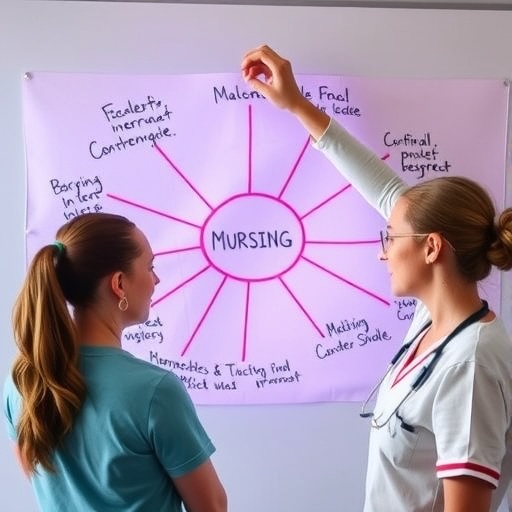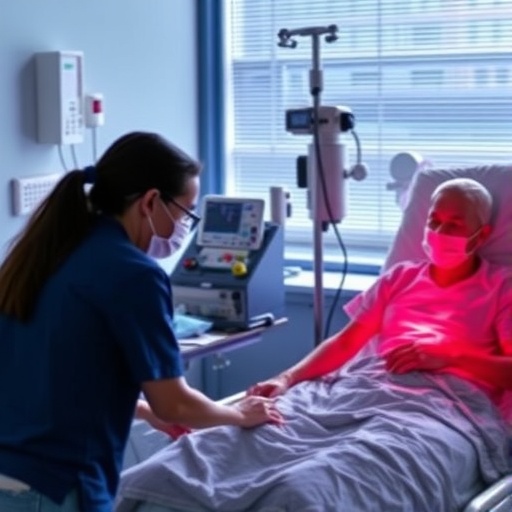New photonic integrated chip could enable developments for many optical technologies

Credit: Penn State College of Engineering
A new technology that can allow for better light control without requiring large, difficult-to-integrate materials and structures has been developed by Penn State researchers. The new photonic integrated chip could allow for many advances in the optical field and industry, ranging from improvements in virtual-reality glasses to optical remote sensing, according to the researchers.
Led by Xingjie Ni, assistant professor of electrical engineering, the research was recently published in Science Advances. Penn State electrical engineering doctoral candidates Xuexue Guo, Yimin Ding, Xi Chen and Yao Duan were co-authors on the paper.
Traditionally, scientists have had two options when it comes to controlling light for use in various optical devices. The first is a photonic integrated circuit (PIC) that can be incorporated onto small chips but has limited ability to control free-space light — light propagating in air, outer space or a vacuum, as opposed to being guided in fibers or other waveguides. The second is a newly emergent metasurface — an artificially engineered thin layer that allows for light manipulation at subwavelength scale but cannot be integrated on a chip.
Ni and his fellow researchers solved this problem by incorporating the best qualities of the two previous options into a new, hybrid photonic architecture that has metasurfaces integrated onto a PIC chip while maintaining high light controllability.
“This incorporation of the PICs and metasurfaces makes it possible to drive the metasurfaces using guided waves inside the PICs,” Ni said. “It enables routing light among different metasurfaces, performing multiple complex functions on a single chip.”
This new development could have applications in optical communications, optical remote sensing — LiDAR — free-space optical interconnects for data centers and virtual reality and augmented reality displays. ?
“The developed technology will pave exciting ways for building multifunctional PIC devices with flexible access to free space as well as guided, wave-driven metasurfaces with full on-chip integration capability,” Ni said.
According to Ni, the most intriguing aspects of his research are the implications for future developments and the success of combining the best traits of existing technology.
“I think the most exciting part of the research is that we married two powerful technologies with complementary capabilities — integrated photonics and metasurfaces,” he said. “Our hybrid system has the advantages from both the metasurfaces and the PICs. In addition, our design is highly flexible and modular. A library of the building blocks can be established for reusing and creating consistent functional components across various devices or systems.”
###
Funding for this research came from the Gordon and Betty Moore Foundation, the National Aeronautics and Space Administration Early Career Faculty Award, the Office of Naval Research and the Penn State Materials Research Science and Engineering Center.
Media Contact
A’ndrea Elyse Messer
[email protected]
Related Journal Article
http://dx.




